The Type 206 diesel-electric submarines were the next generation of 1970s U-boats developed by Howaldtswerke-Deutsche Werft (HDW) for the Bundesmarine. There was an incremental step as it derived strongly from the Type 205. Still small and agile they were tailored for operational conditions of the Baltic in mind, Atlantic and Norwegian waters second, facing the Soviet Baltic and Northern fleets and preying on Warsaw Pact shipping. The shallow Baltic waters dictated their modest dimensions, but they did not lacked anything in terms of agility, speed, discretion and offensive punch. The pressure hulls, as before, were built out of non-magnetic steel to deal with magnetic mines barrages, and detection from MAD sensors. Their low emission profile made the ideal to sneak into inner layers of the Soviet Navy such as the screens of carrier formations. While 18 were provided for the Bundesmarine, the largest U-Boat contingent so far, a numbers were exported or built under licence (Colombia, Israel) while procurements to Indonesia and Thailand were narrowly cancelled. The next Type 209 would be that best-seller. #coldwar #bundesmarine #germannavy #type206uboote #uboote #uboat #balticsea
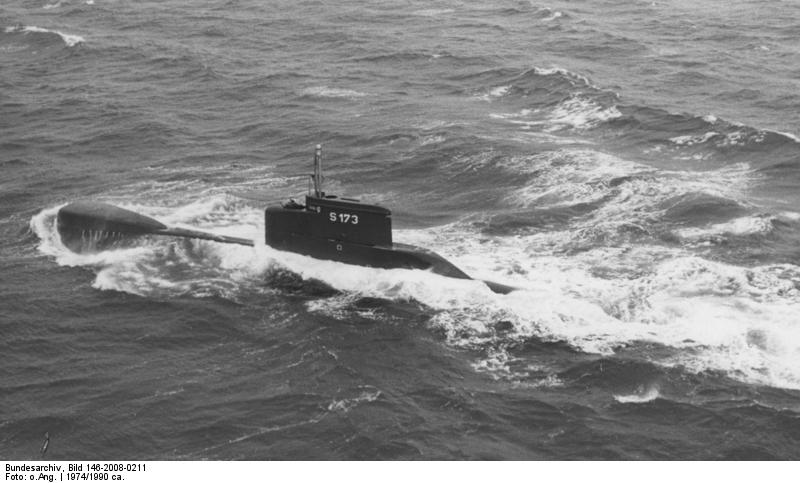
Development
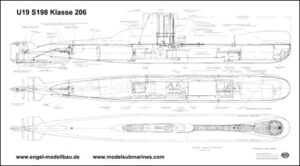 Following the Paris Agreement of 1954, Germany initially was allowed to build submarines, but up to 350 tonnes standard in displacement. It was barely sufficient for experimentations, but after the full integration of the Bundesmarine inside NATO framework and realistic needs, this was lifted in 1962, and still capped at 1,000 tonnes. So this marked the boundary upon which the Bundesmarine asked for a better design for the next ine line Class 206, which development really started back to that year. The aim was simply to create a more powerful, improved U-boat, based on the Class 205.
Following the Paris Agreement of 1954, Germany initially was allowed to build submarines, but up to 350 tonnes standard in displacement. It was barely sufficient for experimentations, but after the full integration of the Bundesmarine inside NATO framework and realistic needs, this was lifted in 1962, and still capped at 1,000 tonnes. So this marked the boundary upon which the Bundesmarine asked for a better design for the next ine line Class 206, which development really started back to that year. The aim was simply to create a more powerful, improved U-boat, based on the Class 205.
The first step to fully taken advantage of the tonnage, was to enlarge battery capacity and reduce ballast.
The fire control system also was taken care of, to take full advantage of a new generation of German designed wire-guided torpedoes. Given the conditions on the Baltic, it was also decided to provide these boats with the ability to drop sea mines while maintaining their torpedo load. Fore the first time, designers created mine belts to be carried externally without creating much turbule,ces or noise, and still allow to carry 24 mines. Essential design features of the previous 205 sticked, like the non-magnetizable steel, single-hull with watertight compartment but the sonar was rearranged in the bow, no longer a separate dome.
The new class was designed to operate in coastal areas and targeting surface warships as well other submarines and trade and a tender was submitted to Howaldtswerke-Deutsche Werft (HDW) shipyard for eight boats as well as Rheinstahl Nordseewerke GmbH (RNSW) for ten boats, to be commissioned from 1972.
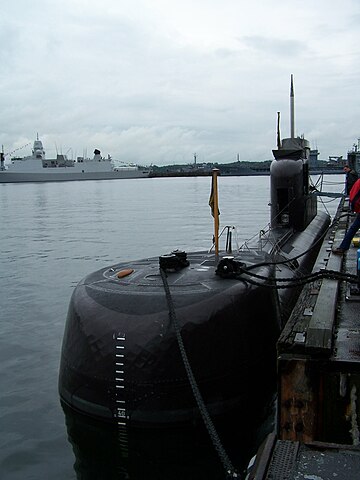 The need for a-magnetic hull was still a challenge at the time. Previously then ten Type 205 submarines built between 1962 and 1968 mwere made of new non-magnetic steel, with like the ealier class, suffered from cracking due to stress corrosion. An urgent programme was funded in order to develop a new steel, receiving much publicity at the time. This revolutionary high-strength, non-magnetic and austenitic steel was said to have a much greater elasticity and excellent dynamic strength. On the late Type 205 boats it proved very satisfactory in service and yet still it had never been selected by IKL’s many export customers and remains unique to Bundesmarine’ submarines. Indeed the Type 206 were designed by Ingenieur Kontor Lübeck (IKL) in 1964–65 party for export. The design was submitted and approved by the Bundesmarine and a production order was signe on 7 June 1969 for eight boats at HDW in Kiel, ten from Nordseewerke in Emden so 18 total, the greatest submarine program in post-WW2 Germany and largest in Europe to that point.
The need for a-magnetic hull was still a challenge at the time. Previously then ten Type 205 submarines built between 1962 and 1968 mwere made of new non-magnetic steel, with like the ealier class, suffered from cracking due to stress corrosion. An urgent programme was funded in order to develop a new steel, receiving much publicity at the time. This revolutionary high-strength, non-magnetic and austenitic steel was said to have a much greater elasticity and excellent dynamic strength. On the late Type 205 boats it proved very satisfactory in service and yet still it had never been selected by IKL’s many export customers and remains unique to Bundesmarine’ submarines. Indeed the Type 206 were designed by Ingenieur Kontor Lübeck (IKL) in 1964–65 party for export. The design was submitted and approved by the Bundesmarine and a production order was signe on 7 June 1969 for eight boats at HDW in Kiel, ten from Nordseewerke in Emden so 18 total, the greatest submarine program in post-WW2 Germany and largest in Europe to that point.
Design of the class

Type 205 profile (3d rendition of CC Mike1979russia profile)

Type 206 profile (3d rendition of CC Mike1979russia profile). Note the differences.
Hull and general design
The Type 206 were larger, but not excessively so than the previous Type 205 that were borderline “midgets”. They were rated at 456 tonnes (449 long tons) surfaced and 500 tonnes (490 long tons) submerged versus 419/455 tonnes submerged for the 205. They were longer at 48.49 metres (159 ft 1 in) (versus 44.30m) while keeping the same limited beam of 4.58 metres (15 ft) – the 205 were actually a tad larger at 4.59 m/15-ft 1-in. However they ended draftier at 4.30 metres (14 ft 1 in) versus 3.80 m (12 ft 6 in). Keeping a limited beam presented a set of advantages, notably to be transported by rails on models not much larger than max regulatory size.

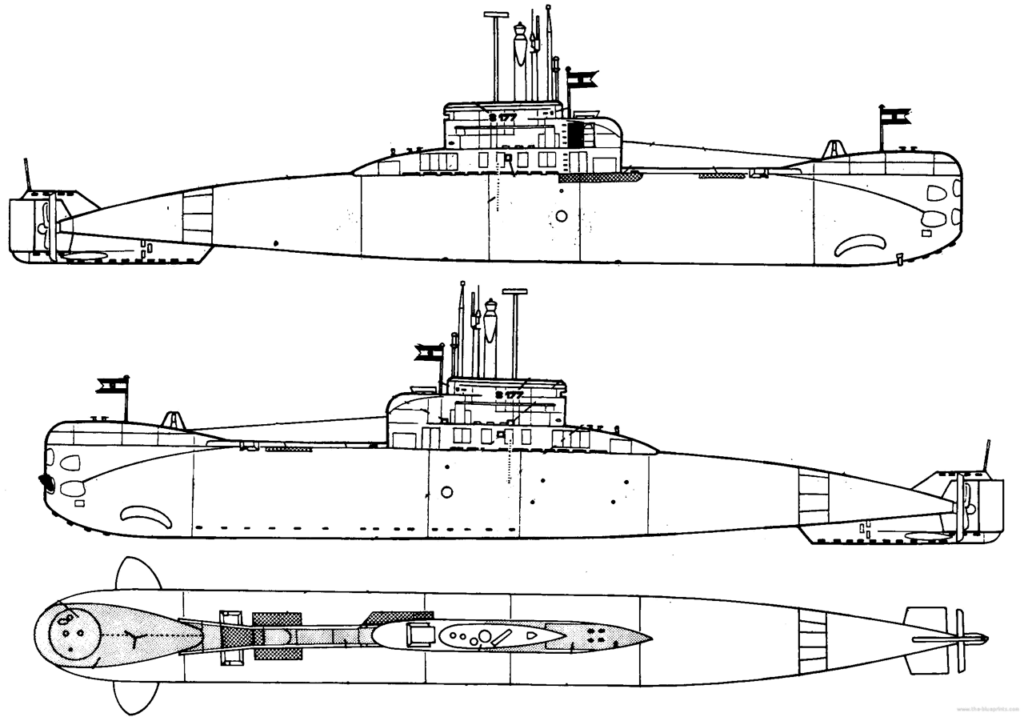
Differences are obvious with the 205: The sonar dome is now including on the upper bow portion with the tubes behind, for a much better detection range, the conning tower had a stepped design with the bridge a level below the sail top, the massive snorkel was replaced forward and location of antennae and periscopes reshuffled. The tail design was completely new, with a vertical tall rudder, full enclosure of the propeller. The latter design was unchanged though, 5-bladed. Diving planes were als unchanged, placed low on the bow. There was however a underbelly aft tail skid.
The crew was kept at 22, like the 205, but crew comfort a a tad better due to the hull being longer and accomodations improvements.
Powerplant
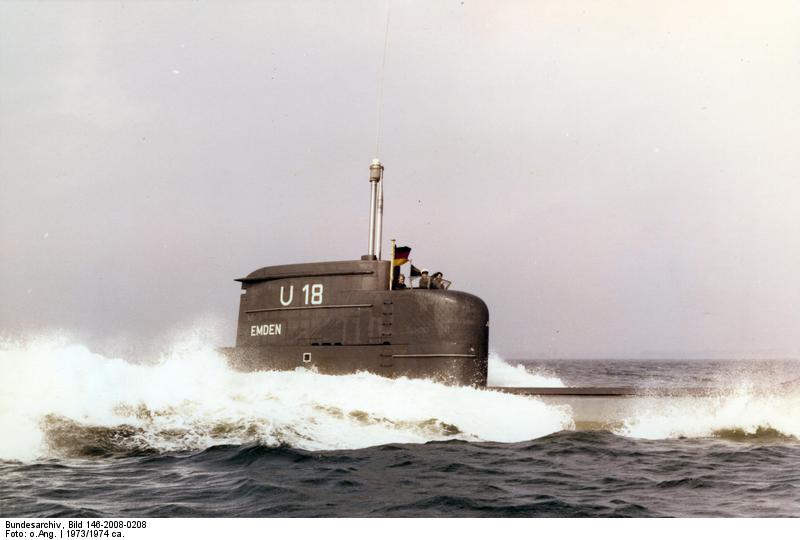
U-18 in sea trials
The Type 206 was powered by the same arragement used on the 205, to keep the design simpler and quicker. It was composed of two MTU 12V 493, 4-stroke diesel engines, each coupled with an Asea Brown Boveri-generator for a tota of 440 kilowatts (590 hp) for each, 880 Kw or c1100 bhp total and 10 knots (19 km/h; 12 mph), surfaced. Underwater performances were obtained by a single Siemens-Schuckert-Werke electric motor rated for 1,100 kilowatts (1,500 hp) for 17 knots (31 km/h; 20 mph) submerged, thanks to a 5-bladed propeller, but later the Type 206A as modernized was given a 7-bladed propeller. The combined power in theory was c2600 hp.
As for range, the Type 206 could cross 4,500 nautical miles (8,300 km; 5,200 mi) at 6 knots (11 km/h; 6.9 mph) surfaced and 228 nautical miles (422 km; 262 mi) at 4 knots (7.4 km/h; 4.6 mph) submerged versus 3950 at 4 kts and 228 at 4 knots sumbmerged or 96 hours thanks to the CO2 scrubber, without emergency oxygen reserves.
Its test diving limit was in excess of 200 m. Like for WW2 subs it was probably wel below c250m for scrushing depth. With the provisions on board it could stay at sea for about 30 days.
Agility underwater was helped by the the front rudders, convex or concave in shape and thus generating more lift or downforce than a conventional flat ones. They could also be fully retracted when in zero position, not causing any disturbance and noise. In contrast to many Class 205 the tail rudder was located behind the propeller, in its flow, with elevators are attached to a rudder support also accommodating the vertical rudder’s lower bearing.
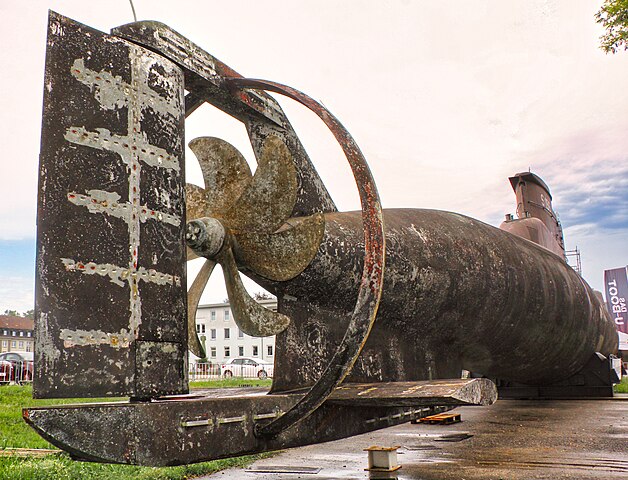
Type 206A propeller and tail, U17 in Speyer Museum
Armament
The game changer here, was the enw sonar and its associated new torpedo, the DM2A1 Seeaal Heavyweight torpedo:
The DM2 Seeaal (“Seal”) was a new generation of heavyweight torpedo developed against surface vessels, and also developed for fast attack craft such as the Type 142 Zobel class (after 1970 refit) and Type 143 Albatross class. The DM2 is derived from the DM1 traced back to the SST-4 and SUT made for export, later upgraded as the DM2A3 upgrade (see later).
Compared to the shorter DM1 Seeschlange, the DM2 is wire guided with a horizontal scanning seeker with a two-core wire, Horizontal steerable seeker, 70° left to 70° right. It was powered by counter-rotating propellers, single electric motor, two battery compartments and heavier warhead to deal a fatal single blow to any ASW frigate or destroyer by exploding under the keel. The original DM2 was introduced in 1970 and the DM2A1 in 1976. It’s likely so that the 206 were directly equipped with the latter.
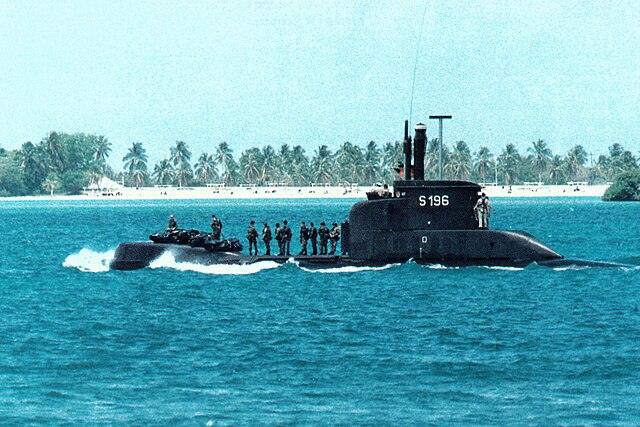
U-17 (S-196) in Puerto Rico waters during joined US-Nato Carribean exercises. The class “sank” two US carriers during their service.
This wire guided torpedo used passive acoustic homing for the final run, with initial wire guidance was perfect for the shallow waters of the baltic, in which sonar ranges were reduced due to surface and bottom echoes. It was good also for standoff range. The 250 kg warhead was equivalent to 450 kg TNT, using a magnetic proximity fuse to detonate underkeel and optional impact fuse in very shallow waters. The DM2 has three speed selection. It was never exported. SST-4 and SUT (exported) however incorporated many features of the DM2.
⚙ specifications DM2A1 Seeaal |
|
| Weight | 1.370 kg |
| Dimensions | 6.08 m and 6.55 m with wire reel x 533 mm |
| Propulsion | Electric motor, Silver-zinc batteries |
| Range/speed setting | 35 kts(12-13 km), 23(13-20 km) and 18 knots (28 km). |
| Warhead | 250 kg hexagon/RDT/aluminum, Impact fuse, magnetic proximity fuse. |
| Max depth | Runs near the surface |
| Guidance | Wire guidance +Passive acoustic homing |
Type 206A Torpedoes: They were given the Seehecht (206A) (“Seajake”) torpedoes. Developed from 1985, in servbice by 1987, they weighted 3,020 lbs. (1,370 kg) for 259.8 in. (6.600 m) overall, carrying a larger 573 lbs. (260 kg) payload to 22,000 yards (20,000 m) at 35 knots (improved on A-4) to 55,000 yards (~50,000 m) at 50 knots, still powered by Silver-zinc battery on contra-rotating skew-back props. They will be seen more in detail on the next Type 209.
Mines: Up to 16 without the torpedo load and 24 in two external containers, 12 each, keeping the torpedo load intact, but with the latter replaced by the mines, up to mines 40 total, which was not negligible. They could be magnetic with a delayed setting in order for the minelayer sub to be far away when activated.
Sensors
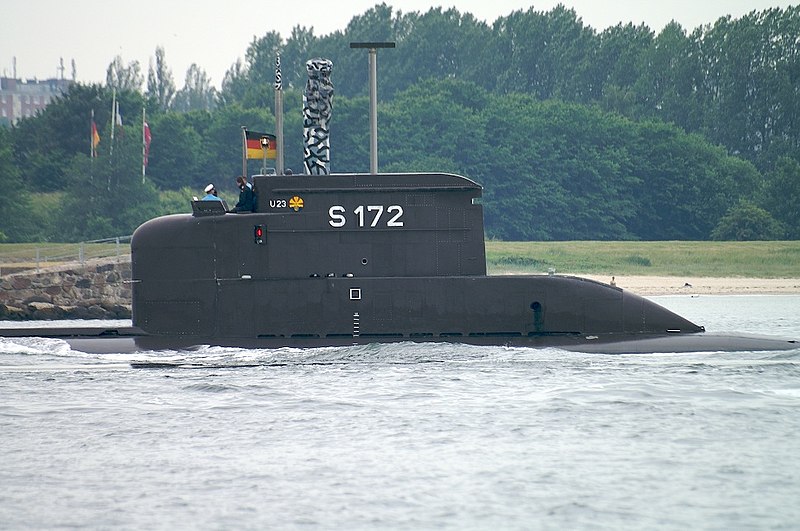
U-23 Conning tower
The CT came out with an ELO/UM mast for electronic warfare, a Periscope, a Rod antenna, a larger tubed Snorkel with integrated navigation periscope and the Weapon control system SLW83 Krupp Atlas Electronics.
The full suite comprised the following:
STN Atlas DBQS-21 (CSU83) Main Submarine sonar in the new bow dome.
Thomson-CSF DUUX 2: Passive rangefinder sonar, same.
Safare VELOX: Sonar intercept, CT
EDO-900: Active mine avoidance sonar.
Thomson-CSF Calypso II: Surveillance and navigation radar, CT mast mounted.
Thomson-CSF DR-2000U: Main ESM (electronic support measures/warfare) system.
Thorn-EMI SARIE: EW system. No data.
Type 206A:
-Thomson-CSF Calypso II, I band radar
-Thomson Sintra DUUX 22, Atlas ElektroniK DBQS-21D sonars.
-Countermeasures: Thompson-CSF DR2000U ESM and Thorn-EMI SARIE-2.
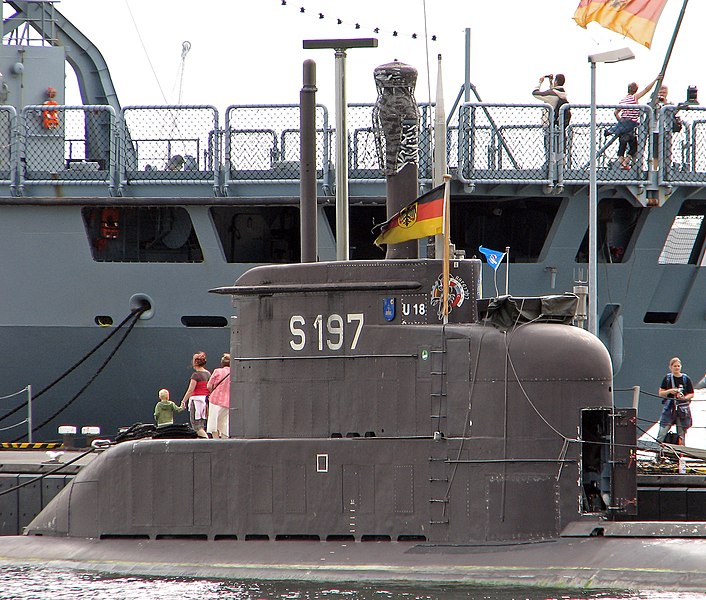
U-18 CT close, note the camouflage net on the combined perirscope/snorkel.
⚙ specifications |
|
| Displacement | 456 tonnes (449 long tons) surfaced, 500 tonnes (490 long tons), submerged |
| Dimensions | 48.49 x 4.58 x 4.30 m (159 ft 1 in x 15 ft x 14 ft 1 in) |
| Propulsion | 2x 590 hp (440 kw) diesel, 1,500 hp (1100 Kw) electric |
| Speed | 10 knots (19 km/h; 12 mph), surfaced, 17 knots (31 km/h; 20 mph) submerged |
| Range | 4,500 nm (8,300 km; 5,200 mi)/6 knts surfaced, 228 nm (422 km; 262 mi) 4 kts submerged |
| Armament | 8× 533 mm TTs, DM2A1 Seeaal/DM2A3 Seehecht torpedoes, 24 mines |
| Max Depth | More than 200 m |
| Sensors | STN Atlas DBQS-21 sonar, DUUX 2, Safare VELOX, EDO-900, Calypso II radar, DR-2000U ESM, Thorn-EMI SARIE |
| Crew | 22 |

U15 at the Kiel week
Modernization
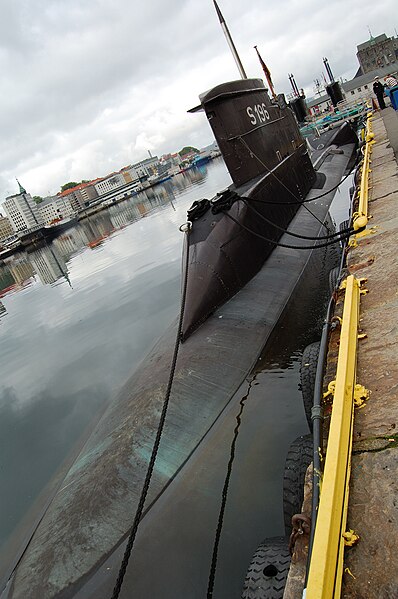 A major mid-life modernisation started on twelve submarines, and all concerned were officially redesignated Type 206A. Of these 18 submarines made for the West German Navy, 12 would be later modernized indeed and re-designated as Type 206A while the others were decommissioned. Work started in mid-1987, and was completed in February 1992 at Nordseewerke, Emden. This upgrade included:
A major mid-life modernisation started on twelve submarines, and all concerned were officially redesignated Type 206A. Of these 18 submarines made for the West German Navy, 12 would be later modernized indeed and re-designated as Type 206A while the others were decommissioned. Work started in mid-1987, and was completed in February 1992 at Nordseewerke, Emden. This upgrade included:
-STN Atlas DBQS-21D sonar fitted with new periscopes
-New weapon control system (LEWA).
-GPS navigation installed.
-New torpedoes: The DM2A1 Seehecht
-Propulsion system comprehensively refurbished
-Accommodations completely revises and modernized.
The Bundesmarine started to decommission some 206A vessels frop 1996 onwards as more of the new Type 212 submarines being commissioned. The Type 206A had another decade of useful service before being gradually dedcommissioned between 2004 and 2011. In June 2010, the MoD announced that all six remaining boats were to be retired and decommissioned based on costs saving measures. Initially they had been planned to linger out up to 2015. There were hopes to esxport them, and indeed Colombia took delivery of two boats, with two more as spares, Indonesia was to procure five of the earlier Type 206 before it was cancelled, as for Thailand for the 206A due to their own budgetary limits at the time.
Exports:
 Bramastra class
Bramastra class
The Indonesian Navy intended to purchase five Type 206 submarines in 1997 to complement the moder modern two Cakra-class (Type 209/1300) submarines already in service. On 25 September 1997, the Indonesian Navy has taken over two of these Type 206 submarines and planned to refit them, tropicalized, followed by three more, but by June 1998, the new majority and budget cuts hand the whole procurement program cancelled despite these subs were already assigned with names and pennant numbers. The handover failed by the Nagabanda class (ex-U 14) was ready for transfer when cancelled, with the conning tower marked with her new name, pennant, and the Indonesian flag already raised, crew present.
 206T class
206T class
In March 2011, the Royal Thai Navy announced its intention to purchase six former Type 206 for 180 million euros. But the new cabinet decided to put this plan on hold in May 2011 and Thailand did in the end never took delivery of Class 206 A submarines. Indeed after waiting for more months and questions asked to the Thai government, the remaining six 206 A were scrapped.
 Intrépido class
Intrépido class
The Colombian Navy purchased four decommissioned Type 206A submarines, the first active ones named Intrépido (ex-U23) and Indomable (ex-U24), commissioned on 28 August 2012. Ex-U16 and ex-U18 were acquired for spare parts. On 5 December 2015, Intrépido and Indomable ended their refit in Germany and the Colombian flag was raised. The deal for the 2011-2014 Colombian naval plan including its armament of Hake torpedoes and a training and maintenance package. They were tropicalized as Indonesian boats, with new cooling system for the powerplant and main combat room as they were intended for the Caribbean. They were taken over during a ceremony at the Kiel Naval Arsenal on August 27, 2012, and in final service by December 5, 2015 intended to secure oil areas on the Colombian Caribbean coast and drug trafficking (using narco subs).
 Israeli Navy
Israeli Navy

In the early 1970s, Israel had three Type 206I (unnoficial denomination) Gal-class submarines built… in Great Britain. They were heavily based on the Type 206 but had very specific arrangements and differences separated them from the German boats. The Gal-class differed externally by their modified rudder, conning tower, flank array sonar, later installed along the hull. They were all decommissioned in the 2000s but one was preserved as a museum in Haifa. This was a slightly modified variant of the Type 206 with a distinctive dome forward, the Gal-class made for the Israeli Navy and built to Israeli specifications. Politically sensible, they were called the “Vickers Type 540” and built in the UK instead of ordered to Germany. Three were built, the first commissioned in 1976, so at the time the serie was still ongoing. When the Israeli navy received its new Dolphin-class submarines (also built by HDW), the Gals were retired. As of 2006, one had been scrapped and two had been sent to HDW in an attempt to find a buyer for them. When no buyer was found, one of the submarines was returned to Israel for display in the Clandestine Immigration and Naval Museum.
Deployment of the Type 206 (1963-1993)
The 18 boats were assigned to the 1st Submarine Squadron for 6 boats in Kiel and the 3rd Submarine Squadron for the remaining two squadrons of 6 at the 1st and 3rd UG in Eckernförde. Together they formed the core of the Bundesmarine submarine flotilla for the 1970-80s. In February 1998, all still active were combined in 1st UG in Eckernförde. They were used in the Baltic and its approaches via the Skagerrak and north sea. In the event of war, their main task would have been to intercept Warsaw Pact landing forces. In addition they woud hunt for Soviet vessels on the NATO’s northern flank area given their range.
During exercises against large and well-protected naval units, they proved extremely sneaky thanks to the effeort to make an a-magnetic and noise-free hull as well as the good electric engine suspensions and other measures. At some point they managed to penetrate the inner US aircraft carrier CBG layer and score a “kill”. In contrast, Soviet subs could be detected with ease. Duringjoint maneuver in the Caribbean, U 24 managed to “sink” USS Enterprise, by a simulated torpedo, with proof, as it was photographed through the periscope. That was somewhat an embarrassment for the USN head of staff at the time.
U 29 made a Mediterranean trip in 1979 and sunk for real this time the former Bundesmarine’s Fletcher(mod) Zerstorer 1 in a live practice off Crete. Training voyages of Class 206 boats were made in even more distant areas took in order to gain experience for the next generation of U-boats. In the spring of 1997, U 17 and U 26 took part inthe annual Caribbean US-NATO exercises, as well as along the US east coast, accompanied by the supply ship Meersburg.
U17 and U26 visited New York City for Fleet Week in 1992.
In February 1999, U 15 and U 25 crossed the Atlantic and 2001 U 24 and U 28 did the same. By the 1990s, they had been regularly involved in operations and exercises in the Mediterranean, notably in support for Operation Sharp Guard and Operation Active Endeavour. Individual training on the western side of the Atlantic and Caribbean were reinforced. The USN was interested in these due to the possibility of the new Kilo-class Russian subs to be operated from South American friendly waters, such as Cuba.
Some boats were modified to the 206 A type between 1987 and 1992 with many changes in electronics, propulsion, weaponry, control, living and working conditions on board. In 1995–96, they onbtained their DM 2 A3 torpedoes, last provided in 1998. There were some selling hopes, but they were ultimaterly decommissioned, first the unmodified Class 206 boats and by 2005–06, U 28, U 26, U 29, and U 30 (U26, U28 and U30 were towed by Polish tug Ikar to Gravendeel, in the Netherlands to be scrapped), then in 2008 U 22, and U 25, later in 2011. It was used by the German Defense Department 71 (WTD 71) for explosive tests. The decision to decommission the last six Class 206 A was accounced on the first week of June 2010, with immediate effect, laid up at the Eckernförde naval base. U 15 and U 17 were decommissioned in December 2010, the remaining four in March 2011. U 17 was however saved from the scrapyard and purchased by the Koblenz Military Technology Study Collection, to be later donated to the Speyer Technology Museum as a permanent loan in 2023, after full demilitarization. The only 206 in service now are the two Colombian boats, and Israeli “Gal” turned into a museum.
U21 also had an interesting history, planned to be sold to Indonesia as Cundamani, then to have been scrapped in Itzehoe, when HDW took it on for a planned company museum in Kiel. The later never materialised so U21 was donated to Eckernförde, towed there, used as a local tourist attraction/technology piece, but local politics had it eventually sold for scrap and broken up.
Here are the following basic logs of the boats. There will be full logs if available.
 U13 (S192, 1971)
U13 (S192, 1971)
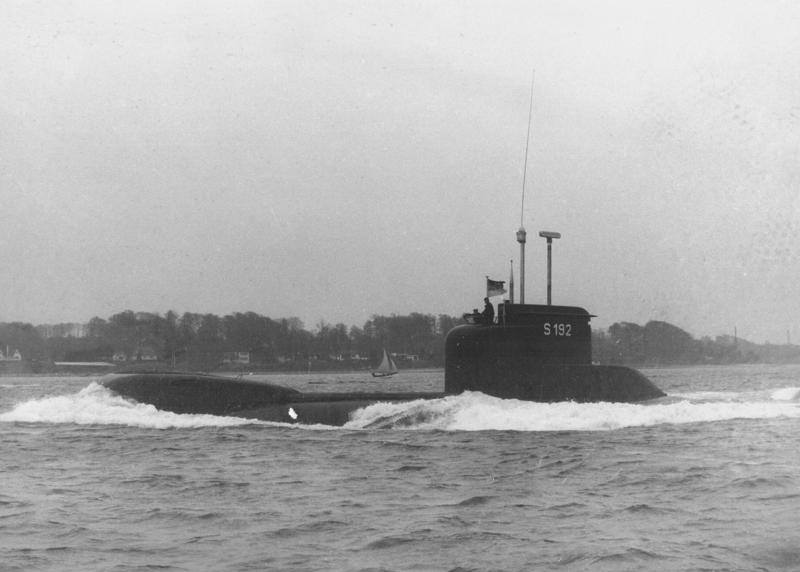
U-13 was laid down on 15 Nov 1969, launched on 28 Sep 1971 and completed on 19 Apr 1973. She was decommissioned on 26 Mar 1997 was to be sold to Indonesia as KRI Nagarangsang (403), but scrapped.
 U14 (S193, 1972)
U14 (S193, 1972)
U14 was laid down 1 Mar 1970, launches on 1 Feb 1972, completed on 19 Apr 1973. She was decommissioned on 26 Mar 1997 was was to be sold to Indonesia as KRI Nagabanda (404), but scrapped.
 U15 (S194, 1972)
U15 (S194, 1972)
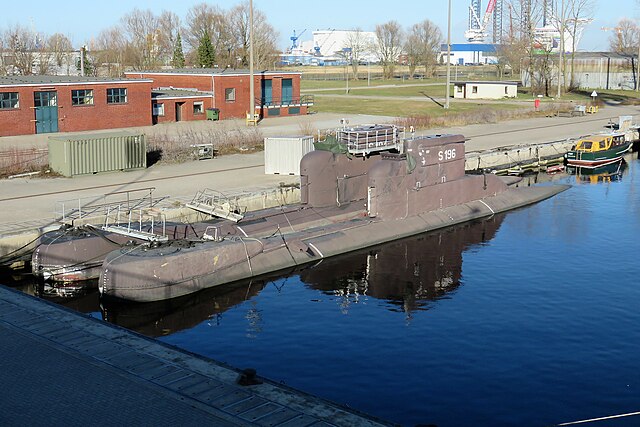
U15 was laid down on 1 Jun 1970, launched on 15 Jun 1972, commissioned on 17 Jul 1974, she was decommissioned on 14 Dec 2010.
 U16 (S195, 1972)
U16 (S195, 1972)
U16 was laid down on 1 Nov 1970, launched 29 Aug 1972, she was commissioned on 9 Nov 1973. She was decommissioned on 3 Mar 2011. She was sold to Colombia for spare parts.
 U17 (S196, 1972)
U17 (S196, 1972)

U17 was laid down on 1 Oct 1970, launched on 10 Oct 1972, launched on 28 Nov 1973 and commissioned on 14 Dec 2010. She Will be preserved as a museum ship at the Technik Museum Sinsheim.
 U18 (S197, 1972)
U18 (S197, 1972)
U18 was laid down on 1 Apr 1971, launched 31 Oct 1972, completed on 19 Dec 1973. She was completed on 3 Mar 2011 and sold to Colombia for spare parts.
 U19 (S198, 1972)
U19 (S198, 1972)
U19 was laid down on 5 Jan 1971, launched on 15 Dec 1972 and completed on 9 Nov 1973. She was decommissioned on 23 Aug 1998. She was to be sold to Indonesia as KRI Bramastra (405), scrapped.
 U20 (S199, 1973)
U20 (S199, 1973)
U20 was laid down on 3 Sep 1971, launched on 16 Jan 1973 and commissioned on 24 May 1974. She was decommissioned on 26 Sep 1996 and was to be sold to Indonesia as KRI Aluguro (407), scrapped.
 U21 (S170, 1973)
U21 (S170, 1973)
U21 was laid down 15 Apr 1971, launched 9 Mar 1973 and commissioned on 16 Aug 1974. She was decommissioned on 3 June 1998 and was to be sold to Indonesia as KRI Cundamani (406), scrapped
 U22 (S171, 1973)
U22 (S171, 1973)

U22 was laid down on 18 Nov 1971, launched on 27 Mar 1973 and commissioned on 26 Jul 1974. She was decommissioned on 18 Dec 2008, scrapped.
 U23 (S172, 1973)
U23 (S172, 1973)
U23 was laid down on 5 Mar 1972, launched on 25 May 1974 and commissioned on 2 May 1975. She was decommissioned on 3 Mar 2011 and sold to Colombia as ARC Intrépido.
 U24 (S173, 1973)
U24 (S173, 1973)
U24 was laid down on 20 Mar 1972, launched on 26 Jun 1973 and commissioned on 16 Oct 1974. She was decommissioned on 31 Mar 2011. She was Sold to Colombia as ARC Indomable.
 U25 (S174, 1973)
U25 (S174, 1973)
U25 was laid down on 1 Jul 1971, launched on 23 May 1973 and completed on 14 Jun 1974. She was decommissioned on 31 Jan 2008, currently for sale.
 U26 (S175, 1973)
U26 (S175, 1973)
U26 was laid down on 14 Jul 1972, launched on 20 Nov 1973 and commissioned on 13 Mar 1975. She was decommissioned on 9 Nov 2005, and scrapped.
 U27 (S176, 1973)
U27 (S176, 1973)
U27 was laid down on 1 Oct 1971, launched on 21 Aug 1973 and commissioned on 16 Oct 1974. She was decommissioned on 13 Jun 1996 and scrapped.
 U28 (S177, 1974)
U28 (S177, 1974)
U28 was laid down on 4 Oct 1972, launched on 22 Jan 1974 and commissioned on 18 Dec 1974, 30 Jun 2004 and scrapped.
 U29 (S178 1973)
U29 (S178 1973)
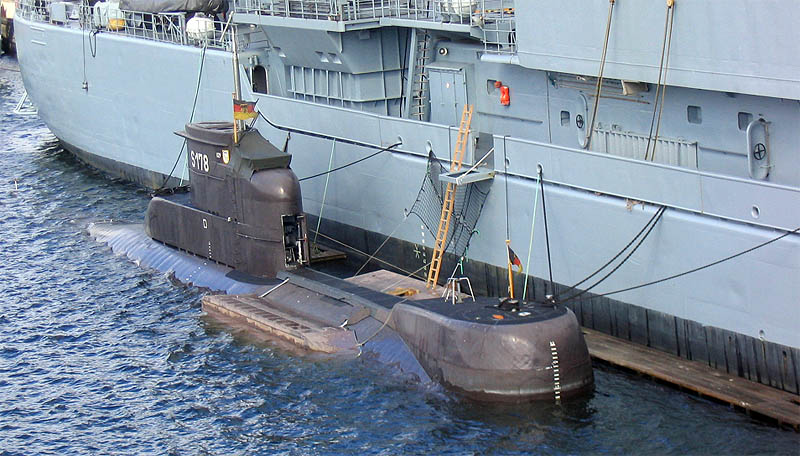
U29 was laid down on 10 Jan 1972, launched on 5 Nov 1973, commissioned on 27 Nov 1974. She was decommissioned on 31 Dec 2006 and scrapped.
 U-30 (S179, 1974)
U-30 (S179, 1974)
U30 was laid down 5 Dec 1972, launched 4 Apr 1974, completed on 13 Mar 1975. She was decommissioned on 31 Jan 2007, scrapped.
Sources/Read More
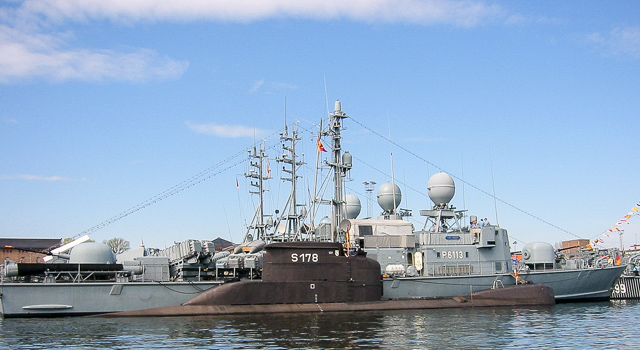
Conway’s all the world’s fighting ships 1947-95
Siegfried Breyer, Gerhard Koop: Die Schiffe und Fahrzeuge der deutschen Bundesmarine 1956–1976. München 1978
Johannes Ewerth: Die U-Flottille der deutschen Marine. Herford 1988
Heinrich Schütz: Nur Vergangenheit oder schon Geschichte? – Die Stahlkrise im deutschen U-Boot-Bau. Marineforum
Karr, Hans (2014). Deutsche Uboote seit 1956 (in German). Stuttgart: Motorbuch
Lutz Nohse, Eberhard Rössler, Moderne Küsten-Uboote, München 1972
Links
globalsecurity.org
presidencia.gov.co submarinos-de-la-Armada-Nacional
upi.com/ submarines-in-anti-drug-war
indomiliter.com/ ks-type-206
u17.technik-museum.de
de.wikipedia.org Klasse_206
navweaps.com cold war German Torpedoes
weaponsystems.net DM2 Seeaal
losbarcosdeeugenio.com/
bundeswehr.de/ /organisation/marine
Videos

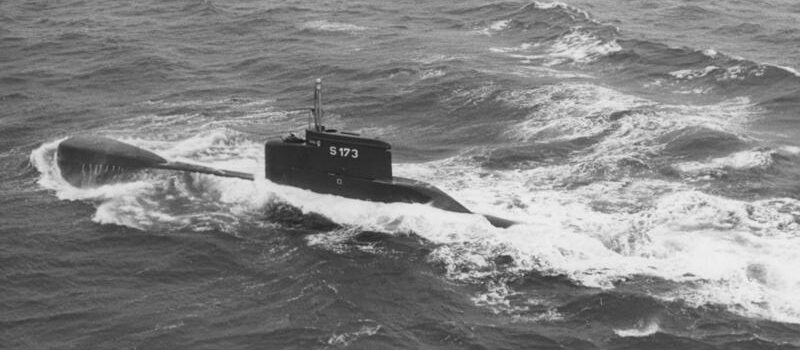

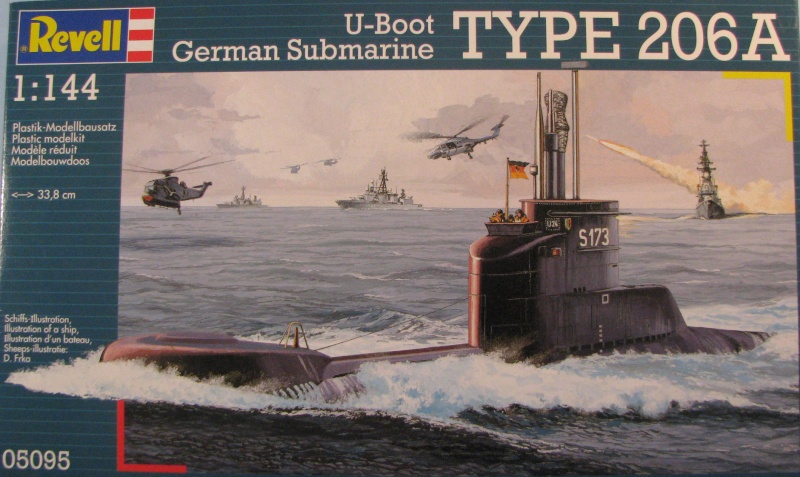
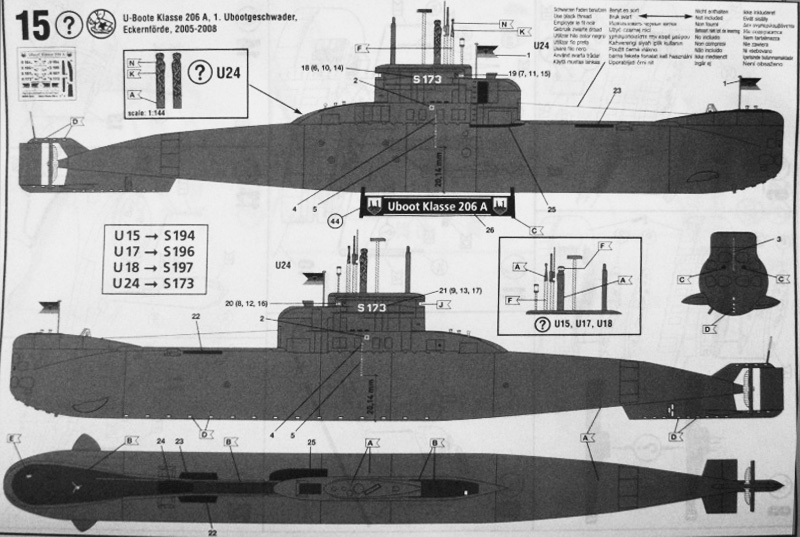
 Latest Facebook Entry -
Latest Facebook Entry -  X(Tweeter) Naval Encyclopedia's deck archive
X(Tweeter) Naval Encyclopedia's deck archive Instagram (@navalencyc)
Instagram (@navalencyc)





 Austrian Navy
Austrian Navy French Navy
French Navy Royal Navy
Royal Navy Armada Espanola
Armada Espanola K.u.K. Kriegsmarine
K.u.K. Kriegsmarine Dansk Marine
Dansk Marine Nautiko Hellenon
Nautiko Hellenon Koninklije Marine 1870
Koninklije Marine 1870 Marinha do Brasil
Marinha do Brasil Osmanlı Donanması
Osmanlı Donanması Marina Do Peru
Marina Do Peru Marinha do Portugal
Marinha do Portugal Regia Marina 1870
Regia Marina 1870 Nihhon Kaigun 1870
Nihhon Kaigun 1870 Preußische Marine 1870
Preußische Marine 1870 Russkiy Flot 1870
Russkiy Flot 1870 Svenska marinen
Svenska marinen Søværnet
Søværnet Union Navy
Union Navy Confederate Navy
Confederate Navy Armada de Argentina
Armada de Argentina Imperial Chinese Navy
Imperial Chinese Navy Marinha do Portugal
Marinha do Portugal Mexico
Mexico Kaiserliche Marine
Kaiserliche Marine 1898 US Navy
1898 US Navy Russkiy Flot
Russkiy Flot Sovietskiy Flot
Sovietskiy Flot Royal Canadian Navy
Royal Canadian Navy Royal Australian Navy
Royal Australian Navy RNZN Fleet
RNZN Fleet Chinese Navy 1937
Chinese Navy 1937 Kriegsmarine
Kriegsmarine Chilean Navy
Chilean Navy Danish Navy
Danish Navy Finnish Navy
Finnish Navy Hellenic Navy
Hellenic Navy Polish Navy
Polish Navy Romanian Navy
Romanian Navy Turkish Navy
Turkish Navy Royal Yugoslav Navy
Royal Yugoslav Navy Royal Thai Navy
Royal Thai Navy Minor Navies
Minor Navies Albania
Albania Austria
Austria Belgium
Belgium Columbia
Columbia Costa Rica
Costa Rica Cuba
Cuba Czechoslovakia
Czechoslovakia Dominican Republic
Dominican Republic Haiti
Haiti Hungary
Hungary Honduras
Honduras Estonia
Estonia Iceland
Iceland Eire
Eire Equador
Equador Iran
Iran Iraq
Iraq Latvia
Latvia Liberia
Liberia Lithuania
Lithuania Mandchukuo
Mandchukuo Morocco
Morocco Nicaragua
Nicaragua Persia
Persia San Salvador
San Salvador Sarawak
Sarawak Uruguay
Uruguay Venezuela
Venezuela Zanzibar
Zanzibar Warsaw Pact Navies
Warsaw Pact Navies Bulgaria
Bulgaria Hungary
Hungary

 Bundesmarine
Bundesmarine Dutch Navy
Dutch Navy Hellenic Navy
Hellenic Navy Marina Militare
Marina Militare Yugoslav Navy
Yugoslav Navy Chinese Navy
Chinese Navy Indian Navy
Indian Navy Indonesian Navy
Indonesian Navy JMSDF
JMSDF North Korean Navy
North Korean Navy Pakistani Navy
Pakistani Navy Philippines Navy
Philippines Navy ROKN
ROKN Taiwanese Navy
Taiwanese Navy IDF Navy
IDF Navy Royal New Zealand Navy
Royal New Zealand Navy Egyptian Navy
Egyptian Navy South African Navy
South African Navy
































 dbodesign
dbodesign